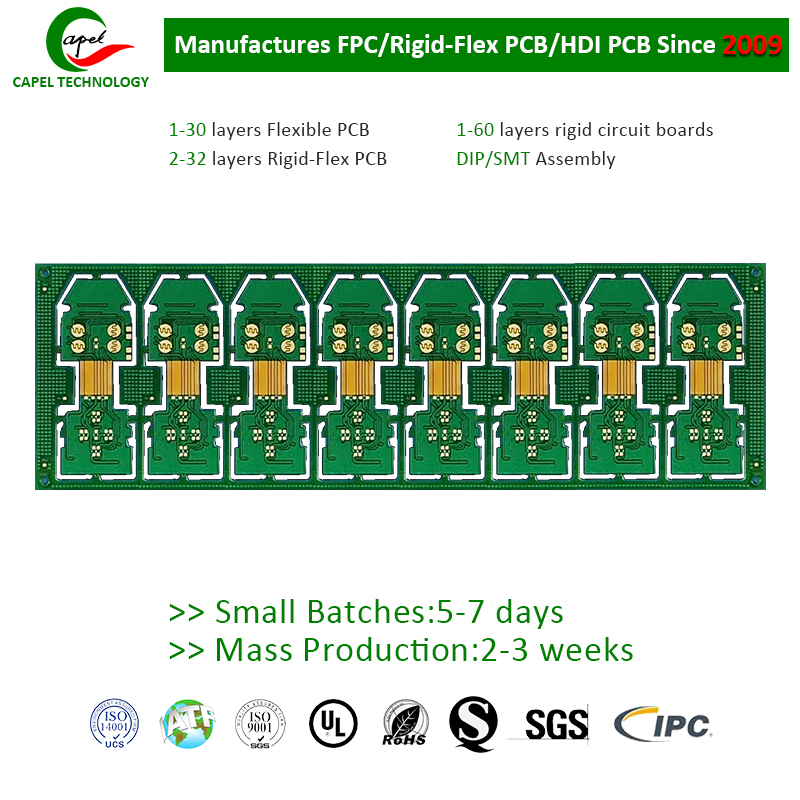In today’s fast-paced technological world, the demand for electronic devices continues to grow at an astonishing rate. From smartphones to medical devices, the need for efficient and reliable circuit boards is critical. One particular type of circuit board that is becoming more and more popular is the rigid-flex-rigid PCB.
Rigid-flex rigid PCBs offer a unique combination of flexibility and durability, making them ideal for applications where space is limited or the board needs to be able to withstand harsh environments. However, like any other circuit board, rigid-flex rigid PCBs are not immune to certain challenges, such as thermal coupling and heat conduction issues.
Thermal coupling occurs when heat generated by one component on the board is transferred to an adjacent component, causing increased temperatures and potential performance issues. This problem becomes more significant in high-power and high-temperature environments.
So, how to solve the thermal coupling and thermal conduction problems of rigid flex rigid pcb, especially in high power and high temperature environments? Thankfully, there are several effective strategies you can employ.
1. Thermal design considerations:
One of the keys to mitigating thermal coupling and heat conduction issues is to consider thermal management when designing PCB layout. This includes strategically placing heat-generating components on the board, ensuring there is appropriate spacing between components, and considering the use of thermal vias and thermal pads to facilitate heat dissipation.
2. Optimal component placement:
The placement of heating components on rigid-flex rigid PCBs should be carefully considered. By placing these components in an area with adequate airflow or a heat sink, the chance of thermal coupling can be significantly reduced. Additionally, grouping components with similar power consumption levels can help distribute heat evenly across the board.
3. Effective heat dissipation technology:
In high-power and high-temperature environments, effective cooling techniques are critical. Careful selection of heat sinks, fans, and other cooling mechanisms can help dissipate heat efficiently and prevent thermal coupling. Additionally, the use of thermally conductive materials, such as thermal interface pads or films, can enhance heat transfer between components and heat sinks.
4. Thermal analysis and simulation:
Thermal analysis and simulation performed using specialized software can provide valuable insights into the thermal behavior of rigid-flex-rigid PCBs. This enables engineers to identify potential hot spots, optimize component layout, and make informed decisions about thermal technology. By predicting the thermal performance of circuit boards before production, thermal coupling and heat conduction issues can be proactively addressed.
5. Material selection:
Choosing the right materials for rigid-flex rigid PCBs is critical to managing thermal coupling and heat conduction. Choosing materials with high thermal conductivity and low thermal resistance can enhance heat dissipation capabilities. Additionally, choosing materials with good mechanical properties ensures the board’s flexibility and durability, even in high-temperature environments.
In summary
Solving the thermal coupling and thermal conduction problems of rigid-flex boards in high-power and high-temperature environments requires a combination of intelligent design, effective heat dissipation technology, and appropriate material selection. By carefully considering thermal management during PCB layout, optimizing component placement, utilizing appropriate thermal dissipation techniques, performing thermal analysis, and selecting appropriate materials, engineers can ensure that rigid-flex rigid PCBs operate reliably under challenging conditions. As the demand for electronic devices continues to grow, addressing these thermal challenges becomes increasingly important for the successful implementation of rigid-flex rigid PCBs in a variety of applications.
Post time: Oct-04-2023
Back







